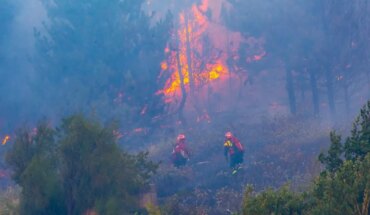the Supreme Court of Justice of the nation (SCJN) will issue these days its ruling on the amparo lodged by representatives of the Rio Sonora basin committees (RACs) in which it demanded be declared unconstitutional a utorizacion issued by SEMARNAT to the Buenavista of copper, Grupo Mexico mining company, for the expansion of a dam of tailings, structure where stored waste derived from the exploitation of minerals.
The dam is being built in the same area where four years ago spilled 40 million liters of acidified copper sulphate. Such wastes came from the same miner Grupo Mexico, which stored them in a pool of leaching, where sulfuric acid and water were used to separate metals from other solids. The spill contaminated the rivers Bacanuchi and Sonora, and affected more than 22 thousand people from the municipalities of Arizpe, Banámichi, Huépac, San Felipe de Jesús, Aconchi, Bavicora and Ures.
Representatives of the Rio Sonora basin committees, where the affected people, coalesce secured in a demonstration in front of the Supreme Court that tailings dam already authorized by the SEMARNAT has 80 thousand times more capacity than the pool involved leaching in the environmental disaster of 2014, considered the worst in the history of the country.
“This spill changed us life. Since then we have no drinking water. We no longer want to sow. We have peaches, but it gives us fear to eat them. There are rumours that we will move further by enlargement of the dam. We don’t want to go, here we are,”says María Elena Bustamante, inhabitant of Bacanuchi and representative of the CCRS.
The settlers say that they were never consulted about the dam project. “Never took us into account to decide, as we have not taken into account before, despite the effects that we had, so we filed the amparo”.
Luis Miguel Cano, a lawyer for power, organization that has been the case, explained that the remedy was filed in court Ninth District of Agua Prieta, with competence to resolve the issues of Cananea, where the mine is located.
In an interview, Cano described this Court judgment against and said that plaintiffs had not even standing to appeal, because only the population of Cananea could question the project. “As if the 2014 spill had unaffected people down the river. What makes the mine affects the entire area”.
The resolution against villagers filed a new resource of non-conformity. The collegiate circuit of Sonora in criminal matters and administrative court gave them the reason. It reversed the decision of the local court and determined that the underlying theme was so important that the Supreme Court should meet him. The second Hall admitted it last April.
The issue is on the agenda of Tuesday that the Supreme Court should address. The common rule is that issues are resolved the day that are listed, but there is the possibility that the vote on the draft judgment differs for next week.
The Court, said the lawyer, you have two options. Can behave as mere legality and Court say that the General Law of ecological equilibrium and environmental protection has gaps and omissions and that does not have on any side projects like this, a tailings dam, that should open up to the informed participation of the people “or can be at the level of a Constitutional Court, at the height of their wages, and defend the Constitution, in the first place”.
The right to participate in the political Constitution of the Mexican United States is mentioned, although in a vague way, clarifies Attorney, in article 26, which States that the national development planning should be democratic and should be open to participation.
International laws if article 23 of the American Convention on human rights, article 25 of the International Covenant on Civil and political rights and the Convention of Escazú contemplate it with clarity, including (agreement regional, next to) signed, on access to information, public participation and access to justice in environmental matters in Latin America and the Caribbean), of which Mexico was driving.
Defence of human rights and environmental organizations, as ProDESC, CEMDA, SERAPAZ, founding, GREENPEACE and OXFAM joined the demand before the Supreme Court and handed an Amicus Curiae, document addressed to the Ministers of the second Chamber, which sets out legal elements on the right to public participation in environmental matters.
Representatives of other movements such as the people’s front in defense of the land (FPDT-Atenco), Mexicali resists and defenders of the water of Tlanixco, State of Mexico, joined the public act outside of the Supreme Court in support of residents of Sonora.
If the Court ruling is favorable for the settlers, SEMARNAT leave without effect the authorization for the dam and project should be suspended, until the community receives information and can give an opinion. “A failure thus set a precedent for other similar cases,” Cano says.
This publication was made possible by the support of Kellogg Foundation.
translated from Spanish: Analyzes court injunction against Grupo Mexico
August 21, 2018 |





